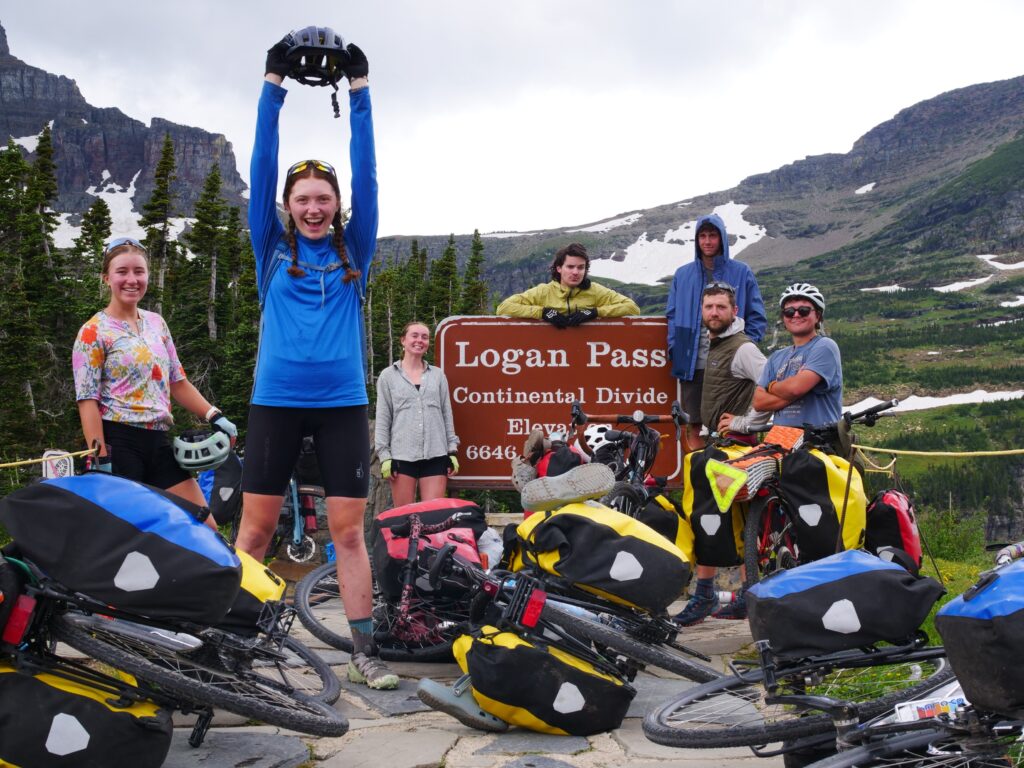Freshman fall of college, I rediscovered my love for biking. It started out as wanting to access the state park north of campus, but then I realized, “Woah, I love this.” Over many rides I’ve had to learn a lot, but I’ve been able to take the lessons I’ve learned from my bike and apply them to my own life. And over this course, I realized cycling is packed with metaphors and lessons for the very environmental issues we’ve focused on.
My first lesson came from persistent knee pain as I increased my mileage to train for this course. It was scary since being able to cycle the Rockies relied on me not injuring myself before the course even began. After getting numerous tips, I realized I was in way too high gear. What I thought were strong big strokes that propelled me further, were actually just slowing me down and leading to a potential serious injury, especially on the hills. I had to push aside my pride, switch to a lower gear, and pedal with more frequent and easier pedal strokes. On this course, I hardly had any knee pain, and as we discussed environmental issues, it got me thinking. The common theme has been that we need consistent, non-extreme efforts to make things happen. We have to put aside our pride, and be willing to go in a lower, more manageable gear (even if that slows us down at first). We need to have system-wide change, but not so extreme that a knee tears or a community loses their only source of income (like a coal mine). To make real progress happen, we have to start small and build up from there.

To do that, we must learn another essential lesson cycling has taught me: get to know your bike. Learn how she sounds, shifts, balances, and moves, so that when something is off, you can address it before it’s too big a problem. Bikes run on many interconnected parts, so one problem can impact the whole system. After meeting with regenerative farmers like Steve Charter and Shane Moe and community members, I’ve realized how important this lesson is for the land and for communities. To know if something is wrong with the land and how to help it heal itself you have to listen, watch, and learn. That’s how Steve has been able to heal his soil. Now his grass is thriving, benefiting his cattle.
That same fact applies to communities. Every bike, ecosystem, town, and person is different, and each have their own way of life, culture, people, and values. We must try adapt ourselves to each. Not the other way around. I understand environmental organizations’ urge to simply move in and try to implement conservation practices because there is a very real sense of urgency, but that can be dangerous if they know little about the area and its people. This can sow distrust and at worst, end up really hurting the community.
Billings rancher Alexis Bonogofsky does not hold the typical political views of her community, but after an oil pipeline burst and flooded her neighbors’ and her own lands, she was able to form a strong coalition of ranchers to fight for reparations and reform. She did this by working with her community members and building trust, and real change happened that benefited both her neighbors and the environment. That level of human and environmental care is key. You need to have both.
You may not always be successful, though, so my fourth lesson is to hope for the sun, but be prepared for bad weather. Bikepacking presents a whole host of conditions-based challenges, especially if you have designated places you need to be. It’s physically challenging when the weather isn’t in your favor and the wind is strong, but mentally it’s even harder. I’ve learned to have a pragmatic optimistic approach to each day. While I always hope for fair weather, I also always mentally prepare for heat, cold, wind, and rain. Talking to our speakers and community members, I realize how vital this mentality is to environmental progress. Climate change is depressing and it’s easy to fall into a nihilist mentality, but that doesn’t help anyone and gets nothing done. The common theme when facing these hard and complicated issues is to never give up hope, but in an active, pragmatic way. What’s most important is to keep moving no matter what comes your way.
And no matter what, you’re not alone. Whether you bike in a group or solo you’ll find a community of bikers, hikers and supportive people along the way that want to see you succeed. What stood out to me the most on this trip was the capacity of people‘s kindness, especially after I crossed the barrier of just being a sweaty stranger to have a genuine conversation about themselves, their background, and their honest perspectives. It’s a very humanizing way to travel and leads you to actually spend quality time in each town along the way. When it comes to environmental progress, it’s vital to connect with and really get to know individual community members and where they call home. If you show that you care about other people, and they care about you, then they’ll care about what you care about.

These are just a few lessons I’ve taken away from biking and the metaphors just keep materializing. In short, listen to the world around you and the lessons it has to teach you. The answers are out there, you just have to look, listen, and never stop pedaling.
One Reply to “Cycling in Cycles: Advice From a Bike by Estelle Smith”
Comments are closed.
Great piece! When Katherine and I biked from Glacier to Missoula in the summer of 1997, we climbed out from St. Mary’s and had to eat four consecutive Snickers just to make it up the mountain. We’ve been bike touring together ever since!